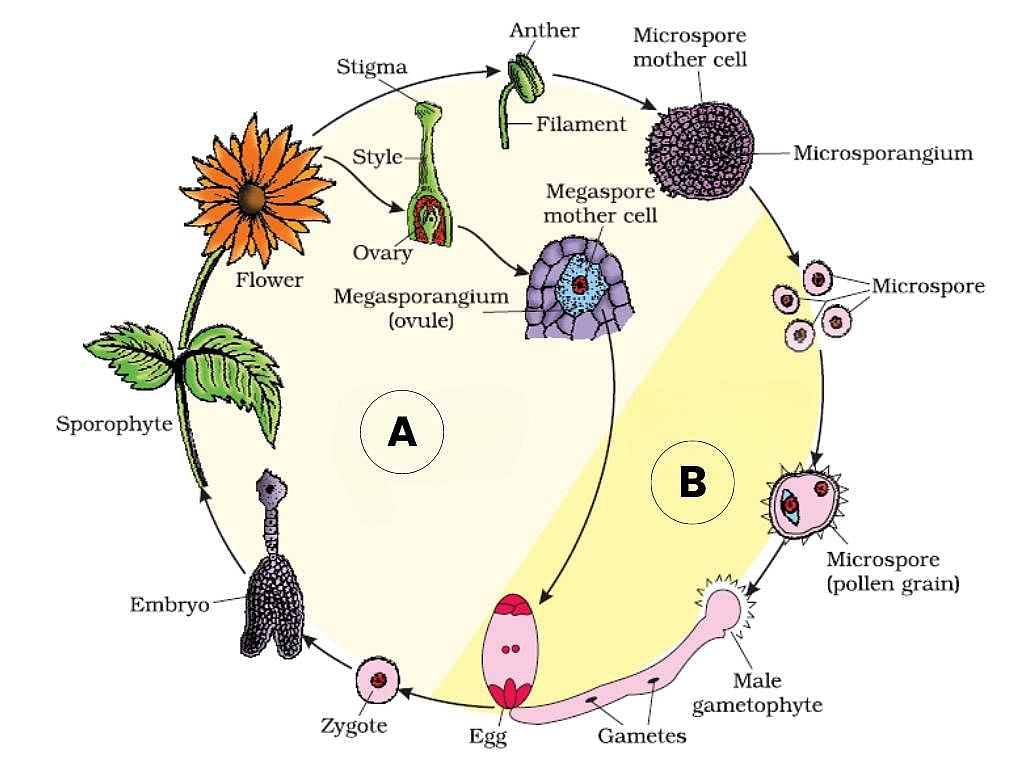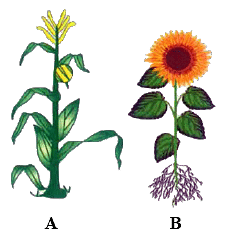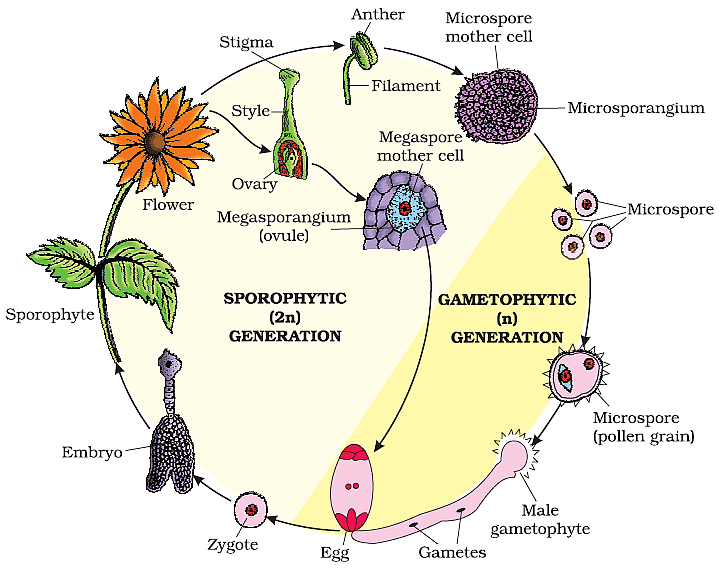Test: Angiosperms (Old NCERT) - NEET MCQ
10 Questions MCQ Test - Test: Angiosperms (Old NCERT)
The given figure shows two phases, A and B of a typical angiospermic life cycle. Select the correct option regarding it.

A
(a) Sporophytic generation (2n)
(b) Gametophytic generation(n)
(c) Sporophytic generation (2n)
(d) Gametophytic generation (n)
B
(a) Gametophytic generation(n)
(b) Sporophytic generation (2n)
(c) Sporophytic generation (2n)
(d) Gametophytic generation (n)

(a) Sporophytic generation (2n)
(b) Gametophytic generation(n)
(c) Sporophytic generation (2n)
(d) Gametophytic generation (n)
(a) Gametophytic generation(n)
(b) Sporophytic generation (2n)
(c) Sporophytic generation (2n)
(d) Gametophytic generation (n)
| 1 Crore+ students have signed up on EduRev. Have you? Download the App |
Match Column-I with Column-ll and select the corrector from the codes given below.
Column-I
(A) Pteris
(B) Cedrus
(C) Sonchus
(D) Marchantia
Column-II
(i) Bryophyte
(ii) Pteridophyte
(iii) Gymnosperm
(iv) Angiosperm
In double fertilization, one male gamete fuses with (i) to form zygote and the other male gamete fuses with (ii) to form primary endosperm nucleus.
Angiosperms A and B shown in the figure belong to the class ____ and ____ respectively.

A
(a) Dicotyledonae
(b) Monocotyledonae
(c) Monocotyledonae
(d) Dicotyledonae
B
(a) Monocotyledonae
(b) Dicotyledonae
(c) Monocotyledonae
(d) Dicotyledonae
What is the significance of the division of angiosperms into monocotyledons and dicotyledons?



















